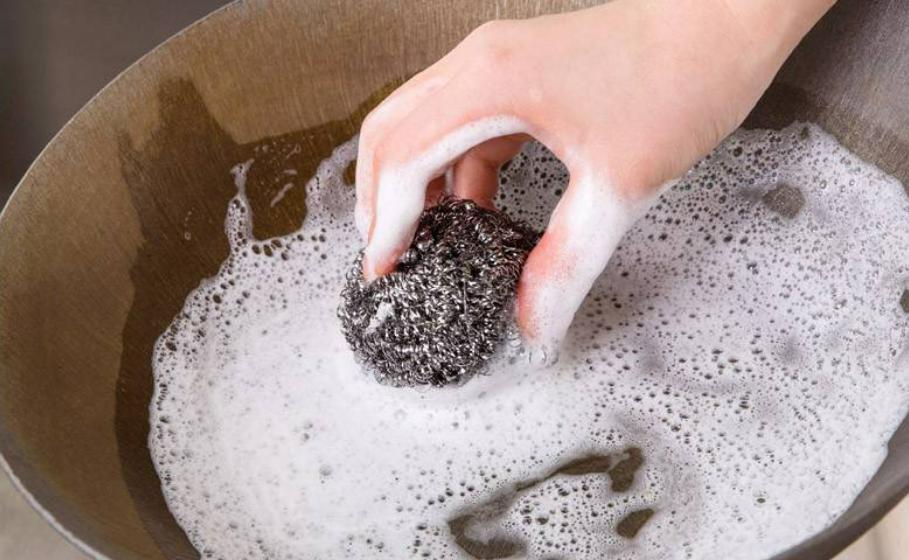Abstract:
Steel balls are a common cleaning tool, but whether gloves or other protective gear are needed during use has been debated. This paper discusses whether gloves or other protective equipment should be worn when using steel balls through comprehensive analysis of the characteristics of steel balls, use scenarios, potential safety risks and personal preferences. Comprehensive studies have shown that, depending on the specific situation, reasonable personal preferences and safety measures can help reduce potential risks and ensure safety and comfort when using steel balls.

Introduction:
Steel balls are commonly used as cleaning tools to remove dirt and attachments, but the need to wear gloves or other protective gear when using them has been debated. Some people believe that wearing gloves can protect their hands from irritation and injury, while others believe that gloves can affect the flexibility and touch of operation. This article will comprehensively analyze the characteristics of steel balls, use scenarios, potential safety risks, and personal preferences to explore whether gloves or other protective equipment is required when using steel balls.
Characteristics of steel ball:
Steel balls are usually made of stainless steel and are resistant to corrosion and wear. Their structural design allows them to effectively remove dirt and attachments. The surface of the steel ball may have sharp edges and protrusions, so it needs to be handled carefully when in use.
Usage Scenarios and potential security risks:
The scenarios in which steel balls are used vary, and the potential safety risks are therefore different. For example, when cleaning kitchen utensils such as POTS and pans, hot surfaces and hot liquids may be encountered, requiring special care to avoid burns. In addition, when using a steel ball to clean the metal surface, metal chips or dust may be produced, and care should be taken to avoid inhaling or touching sensitive parts such as eyes.
The influence of personal preference:
Personal preferences can also affect whether or not you choose to wear gloves or other protective gear. Some people prefer to wear gloves to protect their hands from irritation, scratches or chemicals. However, others may feel that wearing gloves will affect the flexibility and touch of the operation and prefer to use the steel ball directly.
Risk and Safety Measures:
There is some potential risk when using steel balls, but it can be reduced by reasonable safety measures. Here are some suggestions:
Before using the steel ball, check its integrity and wear degree, if there is damage or excessive wear, should be replaced with a new steel ball.
Select the right size and quality of steel balls to suit different cleaning tasks.
If possible, avoid direct contact with hot surfaces or liquids to prevent burns.
For people with sensitive skin, you can choose to wear suitable gloves to reduce skin irritation and damage.
When cleaning the metal surface, try to avoid the production of metal chips or dust, you can take a wet cleaning method to reduce the generation of dust.
A balance of personal comfort and operational flexibility:
Personal comfort and operational flexibility need to be weighed when deciding whether to wear gloves or other protective gear. For long cleaning tasks or situations where greater force is required, wearing gloves can provide additional protection and comfort. However, for some delicate and precise tasks, such as cleaning glass or precision appliances, it may be more appropriate to use a steel ball directly to maintain a better touch and flexibility.
The impact of specific circumstances:
Ultimately, the need to wear gloves or other protective gear depends on the situation. Gloves may be more appropriate for people with sensitive skin, for long cleaning tasks, for high temperatures, or for situations where chemical cleaners are used. But in other cases, according to personal preferences and safety requirements, you can choose to use the wire ball directly.
Conclusion:
A comprehensive analysis shows that the need to wear gloves or other protective equipment when using a steel ball depends on a number of factors, such as the characteristics of the steel ball, the use scenario, personal preferences, and safety measures. Depending on the circumstances, reasonable personal preferences and safety measures can help reduce potential risks and ensure safety and comfort when using steel balls. When making decisions, individual comfort, operational flexibility and safety requirements should be weighed, and appropriate measures should be taken according to the actual situation to ensure the effectiveness and safety of the cleaning process.

